How much does a WMS cost?
WMS software
Logistics
September 20, 2024

Very variable costs...
The price of a WMS ( Warehouse Management System ) can vary considerably, ranging from €25,000 to €250,000 (or even more). The cost of the WMS software depends on many factors, including the required functionalities, the size of the warehouse, and the complexity of the logistics operations.
The implementation timeframe (study, prototyping, training, launch) can range from 3 to 15 months depending on the complexity of the requirements and the diversity of the logistics flows to be managed. Of course, one must consider not only the cost of the WMS software and the integration service, but also other direct project costs, primarily:
- The costs of purchasing and configuring portable equipment (labelers, PDAs, scales),
- The costs of developing computer interfaces (ERP, TMS , OMS),
- The (additional) costs of purchasing computer equipment (PC, server),
- The costs of installing WIFI in the warehouse.
Implementation and operating costs
Most publishers offer an implementation cost (or “build”) and an operating cost (“run”) in their pricing. The latter includes in particular:
- A software usage fee (monthly and based on the number of users and the number of activated options) often in SaaS (Software as a Service) mode,
- The associated curative and progressive maintenance.
The advantages of SaaS mode
It's worth noting that compared to on-premise solutions, the SaaS model avoids investing in costly IT infrastructure ( and its associated maintenance). Hosting with a third-party provider also simplifies updates and allows users to benefit from future developments. The SaaS solution thus offers greater cost flexibility (OPEX versus CAPEX), which is particularly advantageous for logistics providers.
However, it is crucial to carefully assess the cost of logistics software. For example, the temptation to use second-hand equipment, reuse existing warehouse equipment, or purchase custom parts from a broker can be counterproductive, as this equipment is not always certified by the WMS vendor. Furthermore, reused equipment may not come with a maintenance contract guaranteeing standard replacement within 24 hours, for instance.
What internal resource(s) should I provide?
The time spent internally working on a WMS implementation project is far from negligible. We distinguish between the time spent on:
- Collect information in the field,
- Meet to carry out studies,
- Make purchases (materials, consumables, additional services),
- Make progress updates with the service provider and internally,
- Manage IT adaptation work (soft and infra),
- Update the data that will be injected into the WMS (especially the product records and the location file, which are very data-intensive),
- Reorganize your storage and carry out inventory checks,
- Train yourself , practice the solution and transmit this knowledge (operating methods),
- Communicate internally and externally,
- Provide assistance during the first days of WMS .
Estimates of time and resources required
Some integrators mention time estimates by project phase, or even by resource typology, in their quote:
- Service provider side : time for project manager, developers, trainers.
- Client side : time for project manager, project team, Key Users, End Users.
It is usual to take (at a minimum):
- A “1 to 1” ratio , between the days spent by a project manager on the client side and those on the integrator side,
- And a ratio of “1 to 0.5” for each member of the project team.
How to calculate the return on investment with a WMS?
By definition, this involves calculating the total cost of acquiring a WMS :
- In the “Build” phase : license purchase and implementation (i.e. external costs in purchasing services and internal costs in time spent by teams), hardware purchase costs, IT system adaptation costs, IT infrastructure costs.
- Then in the “Run” (or operating) phase: royalty and maintenance costs.
The gains generated by a WMS
It is important to compare these costs with the gains that this investment will generate, such as:
- Saving time,
- Reduction of preparation errors,
- Optimization of human resources,
- Fall in stocks,
- Mastery of handling equipment,
- Reduction of musculoskeletal disorders.
Indeed, the price of a WMS must be evaluated not only in terms of initial costs but also in terms of long-term benefits for the organization. The return on investment calculation must include these factors to provide a complete picture of the added value of the logistics software.
We are at your disposal to discuss the subject in order to provide you with answers and advice. We can support you and help you achieve the objective that we have in common: controlling your logistics flows .
It should be noted that operational logistics consulting firms have cost and gain ratios that can help decision-makers determine the best choice of WMS software .
Most read articles
WMS software
Logistics
4.0 solutions
Supply Chain
December 12, 2025
Digital twin and 3D modeling: How these technologies are revolutionizing your warehouse
Imagine being able to test a major change to your logistics platform before even moving a single pallet. That's precisely the promise of 3D modeling and, above all, the digital twin of the warehouse.
WMS software
Logistics
Supply Chain
November 7, 2025
Go beyond the ABC method: How a WMS refines your inventory management strategy?
In logistics, the ABC method is a classic. But here's the hard truth: in the age of e-commerce, relying solely on a static ABC analysis is like trying to win a Formula 1 race without the right car. The problem isn't the method itself, but treating it as an immutable truth set in stone once a year.
WMS software
Logistics
Supply Chain
July 3, 2024
Inventory management using WMS software
To master your inventory management, it is imperative to use suitable and efficient inventory management software. With this automation, you can monitor the status of your inventory in real time, allowing you to make informed and rapid decisions to avoid stock-outs or overstocks.

















